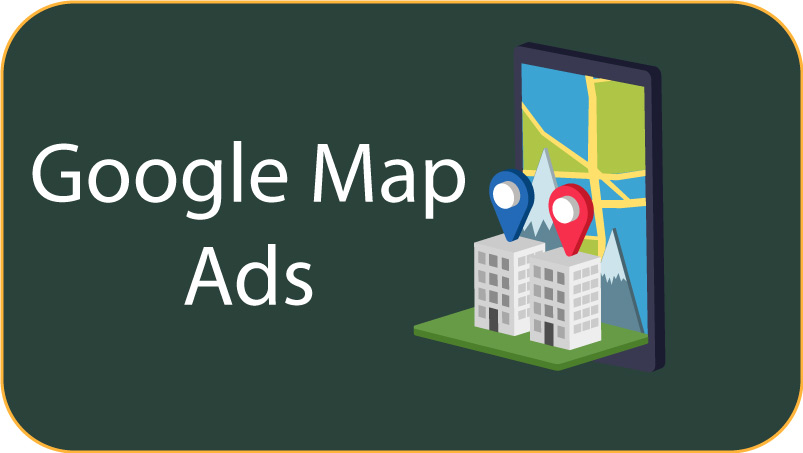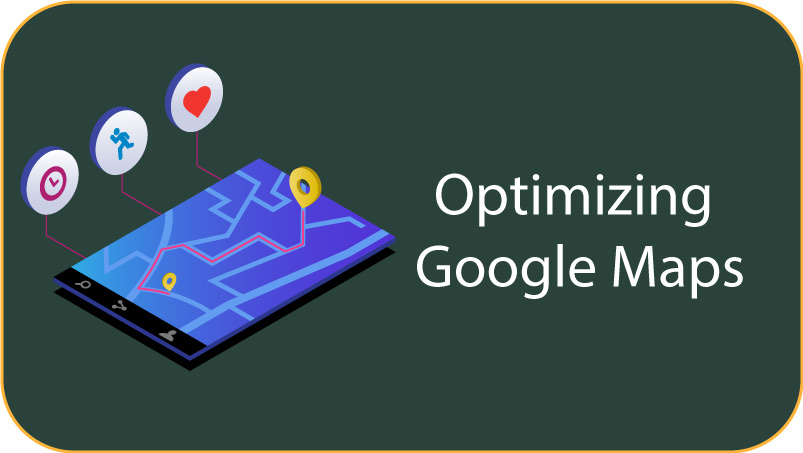Navigating the Future: Key Industry Trends Shaping Digital Marketing
In the fast-paced world of digital marketing, staying ahead of the curve is essential for businesses and marketer

Meta Description: Learn how to set up a Google Map Ads account, optimize and run converting ads with our expert guide! Sell your products and services and get ahead of your competitors!

Google Maps lets you show your business to local people looking for what you offer. It is a very used map app. In this place on the internet, I will tell you the basics of how to use Google Maps to help your business. I will also explain how you can use its special tools to meet your goals for marketing. So, let’s learn about Google Maps advertising and take your business farther!
Have you ever searched for a place on Google Maps and noticed dots with labels next to results? Those are Google Local Ads. Google Local Ads let shops and services show up on Google Maps. When people look for nearby things or search for certain keywords, ads with business names, addresses and contact details may appear. These ads help attract attention.
Ads are dots that pop up on Maps. They share key details like the place’s title, location and website. Pictures or reviews can also show. These ads can include important information such as the business name, address, contact details, website, and even photos or reviews.
Google Map Notices let businesses promote goods or services on Google Maps. These notices appear as branded markers on the map when users search related terms or explore certain places. Clicking a Google Map Ad directs users to the advertiser’s website or the company’s Google My Business profile. This advertising format combines the power of visual maps and focused marketing to reach potential clients at the right place and time.
Google Maps ads provide several advantages for companies wanting to reach nearby customers and increase online visibility. Here are a few key benefits:
💡 Key Takeaway: Google Maps Ads help shops be seen more, reach the right people nearby, get more folks to buy things, work better on phones, and cost less cash. All that makes Google Maps Ads a handy thing for stores wanting more online attention and local customers to come in.
Setting up Google Maps ads takes a few simple steps. These ads can help more people find your business and visit your store or website.
First, make a Google Ads account if you don’t have one. Link this account to your Google My Business page. Then you can make ads for Maps.
Write ads that catch people’s attention and make them want to learn more. Include your business name and where it is. Also say what makes your products or services special. Use short, clear sentences.
Target your ads well. Show them to people near your store or interested in what you offer. This raises the chance people will click and contact you. You can focus ads by location, interests, or other factors.
It’s important to keep an eye on how your Google Maps ads are doing once they start running. Use the Google Ads dashboard to see numbers like how often people click the ads (click-through rate or CTR) and how many end up as customers (conversion rate).
The dashboard also shows the cost for each new customer (cost per acquisition or CPA). Looking at these metrics will show you which ads are doing well and which need work. That way you can make changes to help the ads do better.
💡 Key Takeaway: Setting up Google Maps ads means making a Google Ads account, writing ads that catch attention, targeting the right people, and watching the results with metrics. Following these steps can help your ads bring in more interested visitors to your business.
To begin using Google Maps Advertising, you must first establish a Google Ads profile. Here are the basic actions needed to get your account in place:
Following these steps fully sets up your Google Ads account to immediately use Google Maps Advertising.
💡 key Takeaway: Setting up a Google Ads profile is the first move in getting started with Google Maps ads. It involves registration, adding business info, payment choices, campaign preferences, ad creation, and funds/bidding rules.
When creating ads for Google Maps, it’s important to catch people’s attention and motivate them to act. Here are some tips:
The expert recommends coming up with an idea about what might work well, then trying it out and learning from the results. Use what you find to make your ads better next time.
💡 Key Takeaway: To attract people looking at maps and motivate them, ads must be crafted carefully. Know your crowd, write simply, share what makes you special, and tell folks what to do. Constantly change small things and watch what happens. This helps make ads stronger over time.

The following tips share strategies for improving Google Maps advertisements:
The business address, a phone number, and a clickable map were shown to highlight the location. This made it easy for customers to navigate there.
Optimizing Google Maps ads means choosing the correct people, watching how well it does, improving where it is, writing ads that catch attention, and using other parts too. Following these ideas can make the ads work better and bring in more suitable visitors.
Using Google Maps ads can really help small businesses. Here are some easy ways to get more customers in your store.
Using these tips with your Google Maps ads can attract locals to your business and bring in more customers.
💡 key Takeaway: Leveraging local SEO, utilizing location targeting, and using ads to drive foot traffic are key strategies in maximizing the benefits of Google Maps Advertising.
Using Local SEO and Google Maps Ads together helps people find your business easily. When you optimize your website for local searches and use targeted Google Maps Ads, customers nearby will see your business.
Here are some good ways to connect Local SEO and Google Maps Ads:
By executing these procedures, you can fortify your nearby SEO endeavors and enhance your Google Maps Ads to drive more walk-in activity and allure nearby clients to your business.
💡 key Takeaway: Combining nearby SEO and Google Maps Ads can altogether lift your perceivability in nearby hunt results and drive walk-in activity to your business. By improving your Google My Business profile, utilizing applicable watchwords, encouraging client audits, making localized substance, and checking client input, you can most extreme the effect of your Google Maps Ads and pull in more nearby clients.
One way businesses attract customers is through online ads that target people near the store. Ads on maps help since maps show where things are. By choosing an area around the store, ads will reach people most likely to visit.
Here are some good ways to use map ads to get more customers at the store:
Getting people to the store using Maps ads means choosing who to show them to, making the ads interesting, showing why to come, adding where it is, using what others say, and promoting upcoming store activities.
Google Map Advertising allows businesses to connect with possible patrons wherever they may roam. Ads show up as pop-ups or embedded online, reaching folks in targeted spots or with particular pursuits. Maps presents marketing that moves with mobile users, pinpointing promotions perfectly for peeking passersby. Whether showing shoppers scenes suitable for their situation or showcasing items matching their interests, Google Maps grants companies chances to catch customers’ eyes during excursions. With Maps abilities, companies can craft commercials to catch certain crowds’ consideration no matter where their travels take them. This powerful platform propels promotions precisely to prospective patrons perusing places pertinent to their passions.
To track your Google Maps Ads, log into your Google Ads account. There you can see details and results for your ad campaigns. This data will show you how many times your ads were seen, clicked on, and led to sales. You can also set up conversion tracking. This tracks actions people take like buying something or filling out a contact form on your website. With this info, you can see what works and make changes to improve your Google Maps ads.
How much Google Maps Ads cost depends on a few things like your bids, how related your ads are, and competition. Google Ads uses a pay-per-click system. This means you only pay when someone clicks on your ad. The cost per click can be a few cents to several dollars based on your business and audience. Google Ads uses an auction too. Advertisers bid for ad spots, so what you pay per click may change. To manage your budget, set a daily limit. This controls your spending and prevents going over your set amount.
First, set up conversion actions to see specific outcomes like purchases, forms filled in, or newsletters joined. Google Ads lets you do this right in your account.
Next, connect Google Analytics to your Google Ads. Then you can see how users act on your site or landing page. Check bounce rates, time spent, and conversions to know how Maps Ads help users engage and act.
Third, if your Maps Ads aim to get phone calls, use call tracking tools. They give unique phone numbers to ads so you see calls from each ad or campaign.
Finally, for stores, Google offers store visit tracking. It uses location data to estimate store visits from Maps Ads. This shows your ads’ impact on bringing people to brick buildings.
Our blog is a hub for valuable resources, informative guides, and insightful commentary on a
variety of industry topics, designed to help you stay up-to-date and informed.
In the fast-paced world of digital marketing, staying ahead of the curve is essential for businesses and marketer
In the fast-paced and ever-evolving world of digital marketing, staying informed and continuously learning is cru
In the ever-evolving world of digital marketing, staying ahead of the curve and building a strong online presence